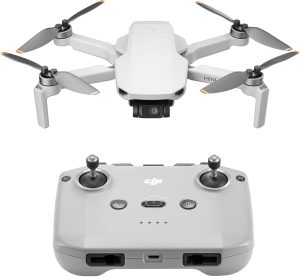Robotics Special: The Robots Make it Rain (Literally)

Robotics is rapidly advancing into new territories, capturing imaginations and opening doors to possibilities once thought to be mere fiction. From drones that control rainfall to humanoids you can build at home, the future is now standing on our doorstep. Let’s dive into the latest breakthroughs in this transformative field of study.
Recent advancements have made robotics more accessible and impactful across various aspects of life. This new wave of technology promises to revolutionize industries by providing innovative solutions and creating opportunities for growth and development.
Robots on a Budget
Engineers at UC Berkeley have achieved a milestone by making robotics affordable for all. Now, for less than $5,000, you can build a humanoid robot at home. Compared with commercial models that cost over $100,000, this is a significant price reduction. The components can be 3D-printed, and the robot is capable of walking, hopping, and remote operation.
Rain-Making Drones
Chinese researchers are exploring how technology can alter natural weather patterns. They’ve successfully used drones to release 2.2 pounds of silver iodide into the atmosphere. This resulted in an increase in rainfall by 4% in Xinjiang, equating to 18.5 million gallons of water.
The potential implications for drought management are enormous. However, scientists are still assessing the feasibility of using such interventions on a larger scale.
Amazon’s Warehouse Automation
Amazon has introduced Vulcan, a novel robot in warehouse automation, equipped with a sense of touch. This robot uses sensors and machine learning to navigate and manipulate items with precision.
While Vulcan performs tasks that are traditionally challenging for robots, humans still play a vital role in operations, focusing on activities Vulcan cannot manage.
The goal is to automate up to 75% of Amazon’s fulfillment operations, showing a balanced approach to integrating technology with human effort.
Robots in Sports
MIT has developed a robot with extraordinary ping-pong skills. This robot can return shots with an 88% accuracy rate, utilizing high-speed cameras and predictive algorithms.
Its ability to execute loops, drives, and chops at high speeds is a testament to the advancements in robotic reflexes and intelligence.
This innovation demonstrates how robotics can enhance sports, bringing new excitement and challenges to familiar games.
Culinary Automation
In the culinary world, robotics is making a stir with cooking robots that mimic complex techniques typically reserved for skilled chefs.
Chinese robots are learning culinary skills that could make traditional dishes more accessible worldwide.
The potential to revolutionize how we experience and share food is vast, connecting cultures through automated yet authentic cooking.
Protecting Sensitive Installations
New robotic technology offers enhanced security for sensitive environments. A nuclear-resistant spy robot is now a part of America’s defense strategy, safeguarding missile silos with 360-degree situational awareness.
This innovation represents a leap in surveillance capabilities, keeping human operators at a safe distance while ensuring comprehensive monitoring.
Such advancements highlight the vital role robotics play in national security and defense.
Humanoid Robots and Public Safety
A recent incident in China has sparked discussions about robots in public spaces. A humanoid robot malfunctioned, leading to an attack on engineers due to a coding error.
While the video went viral, it raised concerns about the readiness of such robots in public.
Ensuring safety as robotics technology advances remains a critical challenge requiring rigorous testing and risk management.
Innovations in Home Automation
Posha, a kitchen robot, promises to revolutionize home cooking by reducing meal prep time by 70%
Developed by Raghav Gupta, this appliance allows users to select recipes and enjoy home-cooked meals without spending hours in the kitchen.
Global Movement in Robotics
Tesla’s attempt to trademark “Robotaxi” faced a legal hurdle, but the company has potential pathways to continue its robotaxi plans.
Uber’s $100M investment in WeRide marks a significant move towards expanding autonomous vehicle services globally.
The partnerships and investments in autonomous technology are setting the stage for a future where robotic vehicles are commonplace.
With each new development in robotics, the possibilities seem endless. The marriage between technology and creativity is paving the way for a future where robots seamlessly integrate into our everyday lives.





